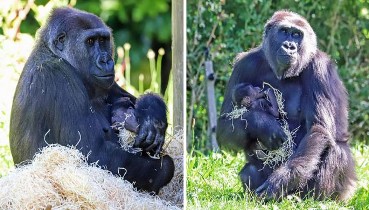
10 Remarkable Types of Caterpillars and What They Become
It's hard not to be captivated by the fluttery, fragile beauty of butterflies and moths. But the caterpillars they start from—with a variety of colors, shapes, markings, and armor—can be equally captivating. What caterpillars all have in common is the incredible metamorphosis they undergo on their journey from egg to butterfly or moth.
Bright green spicebush swallowtail caterpillar with yellow and black spots resembling eyes on a green leaf
Ryan Hagerty / Wikimedia Commons / Public Domain
At first glance, these stunning green caterpillars resemble small snakes or tree frogs—a clever disguise designed to ward off predators. Most extraordinary are the false tan eyespots ringed in black.2 They're not real eyes, but the level of detail in this mimicry is remarkable, including black pupils in the center complete with white highlights that resemble light reflections. If the "evil eye" fails to scare off predators, spicebush swallowtail caterpillars can break out their bright yellow retractable hornlike organs (called osmeteria) located behind their head, which bear a chemical repellent.
These arresting creatures—found throughout the eastern U.S.—hide in folded leaves during the day and venture out in the evening to feed on their foliage of choice, which includes red bay, sassafras, and spicebush. They morph into big, beautiful black-bodied butterflies that sport patches of blue and rows of light spots along their wing edges.
Advertisements
31 August 2023
Advertisements



